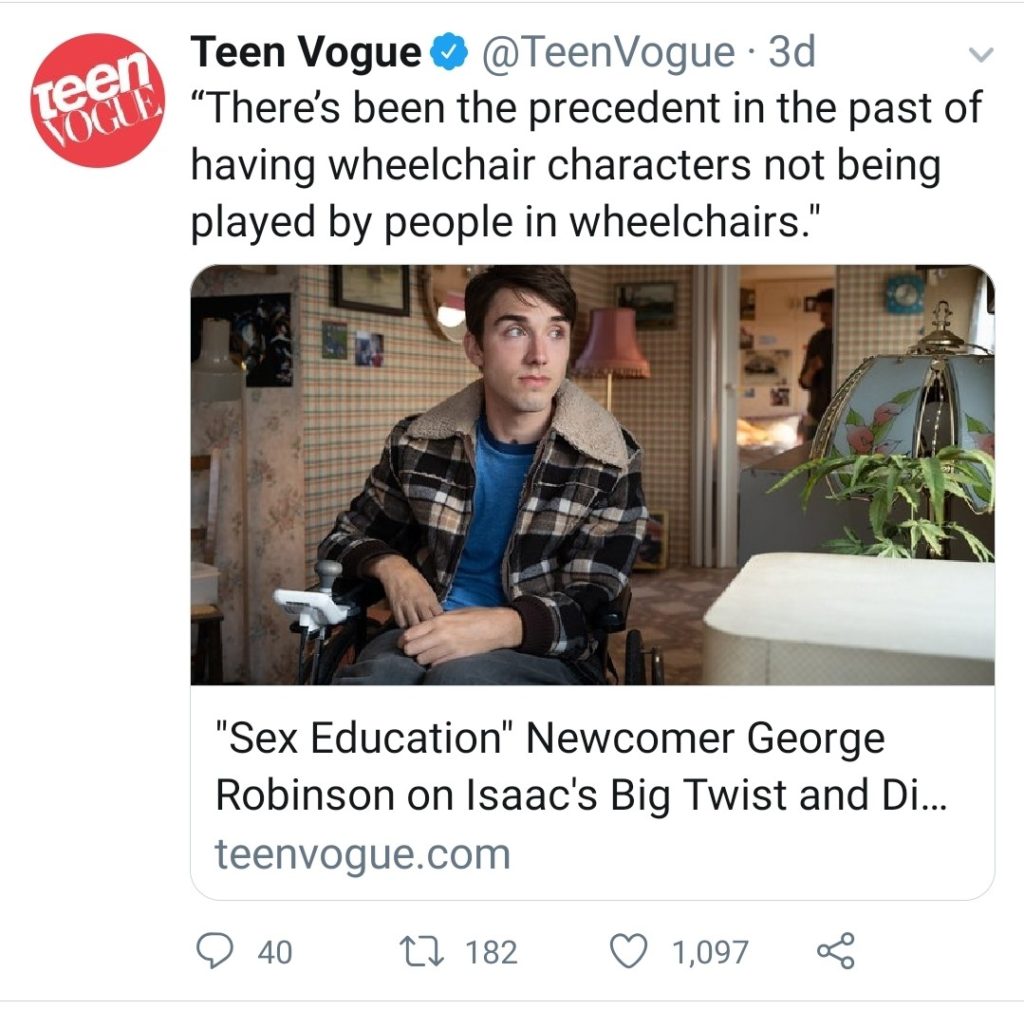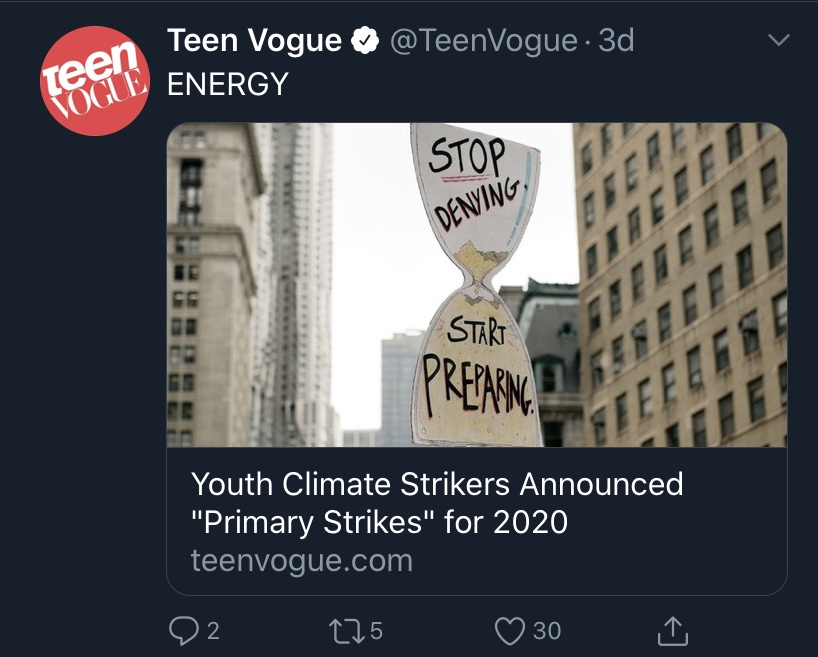
Teen Vogue has an active following on twitter; as this recent post has 40 comments, over 175 re-tweets and over 1,000 likes. This also tells us that they are posting about the right content that their followers want to read about. They also talk about topics that are often overlooked such as disabilities and negative events that happens in the world. It informs teens (the target audience) about these topics in a way that they can relate to; such as new released TV shows and movies etc. The tweet has a quote that is in the article from an interview with George Robinson asking about his new character in “Sex Education” season 2, while also looking at his past and his acting plans for the future. The tweet then links to the article on their website (link below). Tweeting the link with a powerful sentence from the article is a good way to draw people in and is a quicker way of finding a good article to read. Also the picture is about double the size of the caption above it.


Teen Vogue does talk about superficial issues that its target audience (teenage girls) would like to read as well as more genuine issues. This article about Lili Reinhart’s favourite blush is definitely a more superficial issue. The reason Teen Vogue include articles like these is to let their readers escape from “proper” issues. This is because we consume media for different reasons, as the Katz, Gurevitch and Haas theory. This talks about how we consume media for personal needs (understanding self, enjoyment and escapism) or social issues (knowledge about the world, self betterment and strengthen connections with family and friends). As we can see this article is to for escapism and enjoyment as the readers will have an interest in this topic and it lets them escape issues around the world for a couple minutes; however, the other article is more for knowledge about the world.
https://www.teenvogue.com/story/lili-reinhart-beauty-must-haves-covergirl



